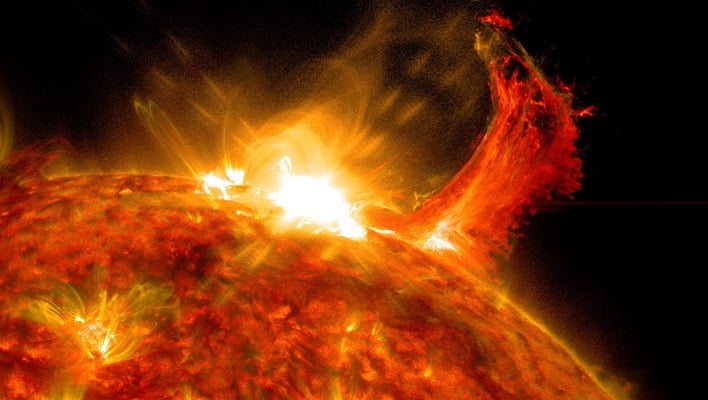
As the Sun reaches the peak of activity in its 11-year solar cycle, the possibility for impressive aurora in the night sky will increase. With the boost in solar activity, the chance of another spectacular aurora light show like the one last month that reached as far south as Florida is possible in the coming weeks and months.
An aurora occurs when charged particles from the sun collide with oxygen and nitrogen in Earth’s upper atmosphere. As the molecules rid themselves of the energy from such collisions, they emit a gorgeous show of varying colored lights dancing across the sky. While these light shows primarily occur around the north and south poles of Earth, more explosive solar flares and coronal mass ejections (CMEs) emitted from the sun can produce tantalizing lights further south, as it did during the first week of May this year.
The sunspot region responsible for last month’s light show is once again facing Earth, and has already emitted several X-class solar flares. However, in order to have another light show like the one last month, there will need to be another strong (G4) or extreme (G5) geomagnetic storm. Geomagnetic storms result from solar flares and coronal mass ejections from the surface of the sun.

These geomagnetic storms are the byproducts of sunspots, such as the one that produced last month’s aurora. The average sunspot number for May 2024 was 172, which was the highest value in the last 22 years, according to Tony Phillips of SpaceWeather.com.
Phillips remarked, “So far, June is even higher at 200. If this continues for the rest of the month, June could log the highest sunspot counts since December 2001, rivaling the peak of potent Solar Cycle 23.”
The Solar maximum is expected to occur sometime between now and the end of the year. Which means more auroras, and the possibility for more that will reach farther south into the lower 48 states of America, and other regions around the world.
Phillips added, “The May 10th superstorm may have been just the first of several magnificent displays we experience between now and 2026.”
Anyone wanting to stay abreast of when the next aurora light show may occur should bookmark the Space Weather Prediction Center (SWPC) website, as it will give the most current space weather available. If anyone has photographed the aurora this year, feel free to share images in the comments below.